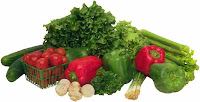 The New Year is here. During the holidays you probably indulged in turkey, stuffing, pumpkin pie and many other tempting goodies. Now you step on the scale and much to your dismay, you've gained a few pounds in addition to the extra weight you may have already accumulated throughout the year. How can you make this the year to slim down and keep the weight off for good? Researchers say losing just five to 10 percent of your excess body weight can make a big difference in your health, including lowering cholesterol and reducing the risk for diabetes. So where do you start?Here are some common-sense strategies to lead you on the way to long-term weight loss.
The New Year is here. During the holidays you probably indulged in turkey, stuffing, pumpkin pie and many other tempting goodies. Now you step on the scale and much to your dismay, you've gained a few pounds in addition to the extra weight you may have already accumulated throughout the year. How can you make this the year to slim down and keep the weight off for good? Researchers say losing just five to 10 percent of your excess body weight can make a big difference in your health, including lowering cholesterol and reducing the risk for diabetes. So where do you start?Here are some common-sense strategies to lead you on the way to long-term weight loss.Eat smaller meals throughout the day rather than a few big ones. The human body needs food about every three hours. So you should have a snack every two to three hours to ward off hunger. I recommend snacks that include a high-quality protein and carbohydrates, such as low-fat yogurt and fruit, a smoothie, or soy cheese and a pear.
Snacks are an important part of a healthful eating plan. A snack will help keep you from overeating [at mealtime], and it helps to curb your appetite. Other suggestions for snacks include graham crackers, low-fat popcorn, vegetables with low-fat dip, and whole-grain crackers.
Exercise regularly doing something you enjoy. In order to burn more than you take in, you need to exercise. It increases your metabolism so even when you're at rest, you'll be burning more calories. Regular aerobic physical activity (such as walking, biking or swimming) for at least 20-30 minutes a day, three to five times a week. If you're a beginner, you can start slowly, but the more you can add to the duration, the better. Ideally, you should try to exercise 30-45 minutes, five days a week.
In particular, walking may be a good choice. Buy a pedometer and keep track of the number of steps you take each day. Once you see how much you walk, try adding 1,000 steps each day, with an eventual goal of 10,000 steps or more.
Lose weight slowly (1-2 pounds per week). Slow weight loss is important. It will be easier to keep it off. Quick weight loss is more apt to come back on, leading to yo-yo dieting that has a negative impact on your long-term health.
Eat slowly. It takes 20 minutes before your brain realizes it's full. That means the amount of calories consumed before you begin to feel full can vary a great deal depending on how quickly you eat. So eat slowly, savor your food [and] enjoy it.
Drink 8-10 glasses of water per day. Need i say more?
Common Pitfalls to Avoid...
Negative self-talk. Avoid negative thoughts and statements such as "I'm fat. I'll never be able to lose weight." Be positive. Affirm that you can change your lifestyle.Emotional eating. Don't eat as a way to cope with stress or other negative emotions. "It's one of the biggest sources of overeating. Food never solves the problem, and usually it just contributes to a cycle of guilt, low self-esteem and overeating, Get to the root of the problem. Face the situation head on. Food is meant for physical nourishment, not for emotional comfort, reward or punishment.
Start the year of with a new positive outlook.




























